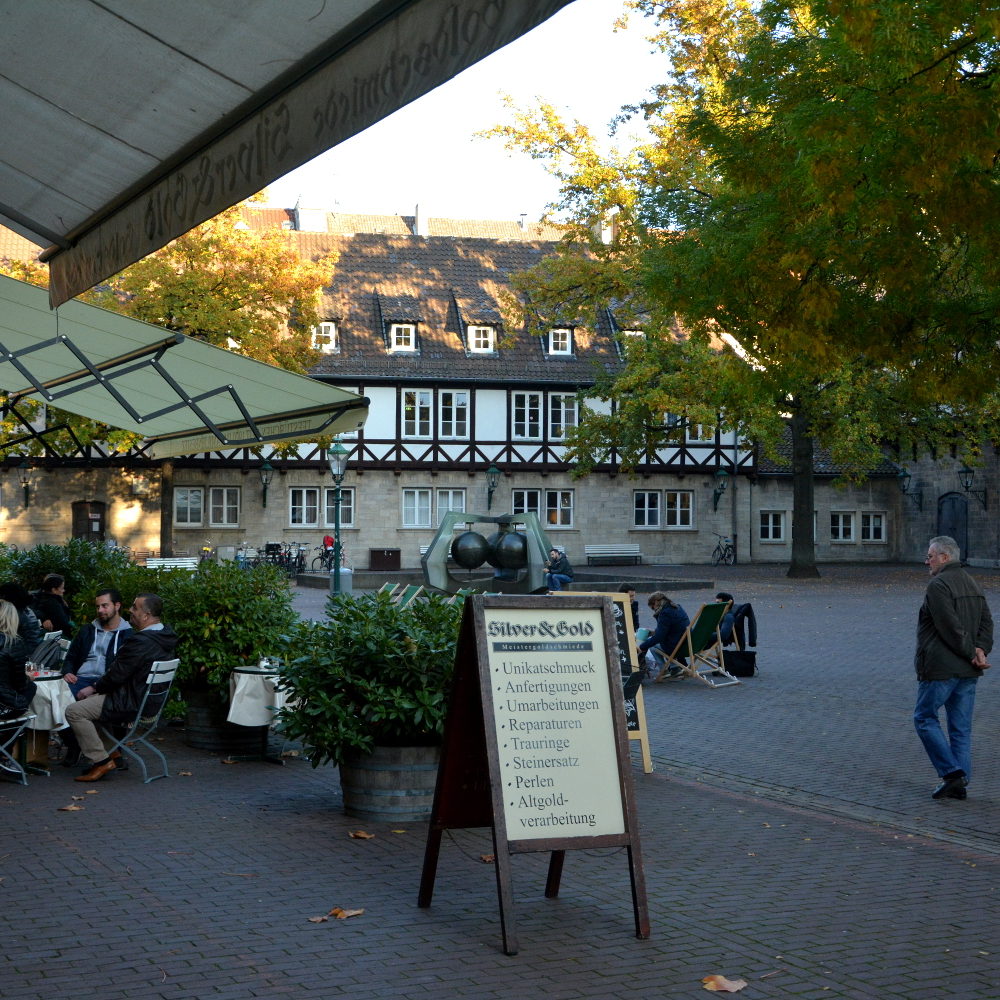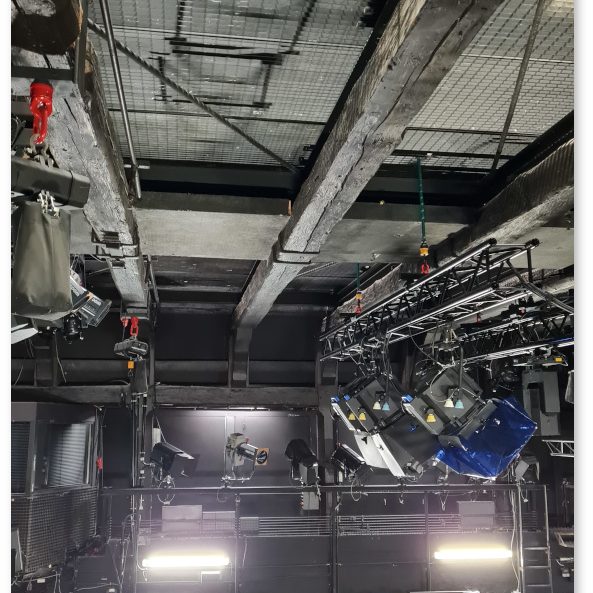Deceptive mediaeval appearance: Nowadays, Ballhofplatz – Ballhof Square in English – may give every appearance of being the idyllic remnants of old Hanover. However, its origins are rather more recent: the square and surrounding buildings are a product of the redevelopment of the Altstadt [historic old town] by the National Socialists prior to the Second World War.
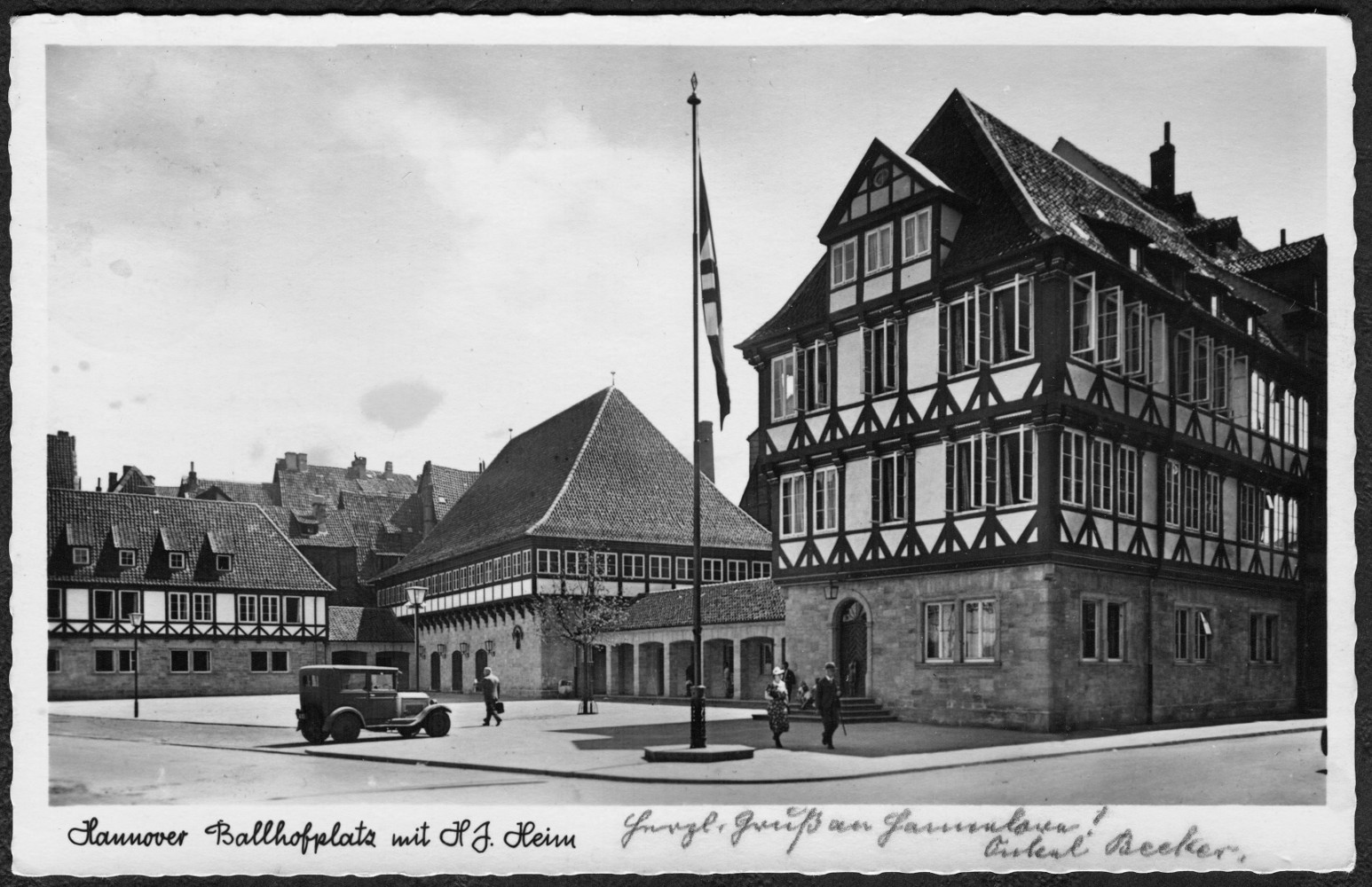
The history of the Ballhof
The “Ballhof” was built around 1650 in the vicinity of the Leineschloss for ball games and festivities for the amusement of the court nobility – hence its name. It has a chequered history: up until the second half of the 19th century, it is Hanover’s largest events hall for fairground entertainers, theatre, concerts, animal fairs, clubs and meetings. It is the venue for gatherings of the pioneer Hanoverian workers’ movement. In 1867, the local association of the “General German Workers’ Association” [Allgemeiner Deutscher Arbeiterverein], an important branch of the future SPD, was founded at the Ballhof. When Bismarck’s Socialist Laws expired, the electoral association for the 8th Hanoverian constituency reconvenes here in 1890. In the same year, the “Union of Factory, Agricultural and Commercial Support Workers in Germany” [Verband der Fabrik-, Land- und gewerblichen Hilfsarbeiter Deutschlands] is founded at the Ballhof and becomes the forerunner of the “Mining, Chemical & Energy Industrial Union” [Industriegewerkschaft Bergbau, Chemie, Energie (IG BCE)] – its headquarters are still in Hanover today.
Later on, the Ballhof becomes outranked by more modern halls in better locations: the Tivoli on Königstrasse”, “Volkshaus” on Nikolaistrasse, “Königsworth” between Brühlstrasse and Andertenscher Wiese, the “Concert Hall on Am Hohen Ufer”, and others. In the early days of the Weimar Republic, the Ballhof is a local centre for homosexual and lesbian life. In its latter days a cinema, auction house and furniture warehouse, the run-down building was on the verge of demolition towards the end of the 1920s.
The slums of the Altstadt
Since the 19th century, large parts of Hanover’s historic centre have degenerated into slums set in the midst of a modern city. Old photographs and films depict unlit alleyways, overpopulated timber-framed housing and insanitary conditions. Better-off families move into the newly emerging Gründerzeit districts [created in the Wilhelminian era in the latter part of the 9th century], such as List or Südstadt. Poorer families stay or other less well-off families move there – among them many Sinti families and Jewish immigrants from Eastern Europe, seeking a future in Germany in the wake of anti-Semitic pogroms. One such example is the Russian-Polish Grünspan family (also spelt Grynszpan) who, from 1915 until their eviction in 1938, live on the second floor [US: third floor] in Burgstrasse 36. With no bathroom and just a toilet in the backyard, seven children were born in this 40 m² [430.5 sq. ft.] apartment, four of which died in childhood. Herschel Grünspan grows up here – his assassination attempt on a German Embassy secretary in Paris is used by the Nazis as the pretext for the “Night of Progroms” in 1938.
The Nazis bring old plans to fruition
In the eyes of the National Socialists, the Altstadt is a hotbed of alcoholism, crime and prostitution, as well as a breeding ground for Communism: a swamp in need of draining. The anti-Semitism is expressed overtly: “…a large proportion of the houses today belong to Polish Jews who essentially bought them during the time of inflation. These owners have no interest in maintaining the houses, but only in squeezing as much as possible out of renting them out.” These are the words of Karl Elkart, city planning director in Hanover from 1925 to 1945, at a lecture in 1936 ahead of the redevelopment of the Ballhof quarter.
However, plans for ‘cleansing and recovering’ the Altstadt go back further. They fell through due to financial issues and ultimately due to the economic crisis at the end of the Weimar Republic. Following 1933, the new leaders energetically seize the reins to put the old plans into action. The aim is now to create space for politically reliable and “racially valuable” citizens [“Volksgenossen”, i.e. those of German blood] by demolishing buildings and evicting the previous residents. Opening up these areas of dense housing is considered a prerequisite for exerting better social control. This district of the Altstadt consists of narrow lanes with scores of dwellings on the sides and rear of the courtyards, so over-cramped that approx. 84 per cent is built on.
“Pickaxe creates light and fresh air…”
…runs the headline of the National Socialist “Niedersächsische Tageszeitung” [Lower Saxony Daily Newspaper] on 6 June 1936. By 1939, the first stage of the ‘Cleansing and recovery of Altstadt Quarters’ has radically altered this district and a new square has been created. The city of Hanover buys up many of the plots of land. While the rear courtyards are radically gutted by getting rid of the side and rear dwellings, the front buildings are torn down and replaced by new properties built on considerably larger plots of land. The southern section of the narrow Ballhofstrasse is demolished and not replaced, thereby freeing up the area around the historic Ballhof. As renovation work begins, there is as yet no decision as to what exactly will become of it. Prominent figures lobby for a chamber music hall or lecture theatre. For the space in front of it, the town planners originally envisage an “ornamental square” with lawns, trees, benches and a fountain. Instead, it is turned into… an asphalted parade ground for marches. Yet, the nation’s youth in uniform also need a place to stay. In December 1936, the press reports for the first time on the decision to create a room for functions and meetings for the Hitler Youth at the Ballhof.
Political cleansing through redevelopment
To the east of the historic Ballhof, a new hostel for the Hitler Youth (Hitlerjugend abbreviated to HJ) is built, while the half-timbered building facing Burgstrasse houses the League of German Maidens (Bund Deutscher Mädel abbreviated to BDM). (The three buildings are nowadays used by the State Theatre of Lower Saxony). A police station moves into the building on the corner of Burgstrasse, and the Sturmabteilung [literally ‘Storm Detachment’, the Nazis’ paramilitary wing, known as Brownshirts, abbreviated to SA], rules the roost in the “Kreuzklappe” tavern near the Kreuzkirche. The original residents of the neighbourhood were relocated to Mecklenheide and Ricklingen and rehoused in basic flats before the redevelopment began. They stay there, too. The new buildings on Ballhofplatz are predominantly occupied by the city’s public employees and state officials – worthy “human material” from the regime’s point of view. Urban development councillor Elkart expresses this in a speech in 1941: “Of course, the people who lived in this area were not the most valuable, socially speaking. Fifteen per cent of them could be classified as antisocial. (…). All the prostitutes, very many of whom lived in this area, have been removed, out of consideration of their proximity to the HJ home”.
Within the space of a few years, the heart of the so-called “Altstadt swamp” has become a haven of order and conformity. After the war begins, plans for further redevelopment of the Altstadt are put on hold. Instead, bombing raids take care of this task but to a drastic degree, compulsorily ‘redeveloping’ large areas. Thanks to the gutting of the courtyards and minimal use of half-timbering, the houses on Ballhofplatz are almost the only buildings in the Altstadt to survive the bombing.
Additional online information
Wikipedia entry The Ballhof [in German]
Wikipedia entry Hitler Youth HJ
Wikipedia entry League of German Girls BDM
Youth in Germany 1918-1945 Youth marching in step [in German]
Nazi era: Hitler Youth in Hanover [in German]
Further reading: Click here
Texts and images: Michael Pechel

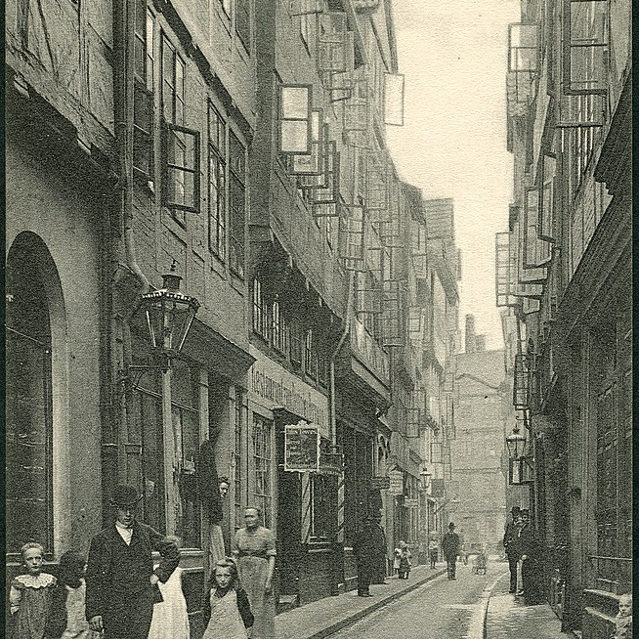
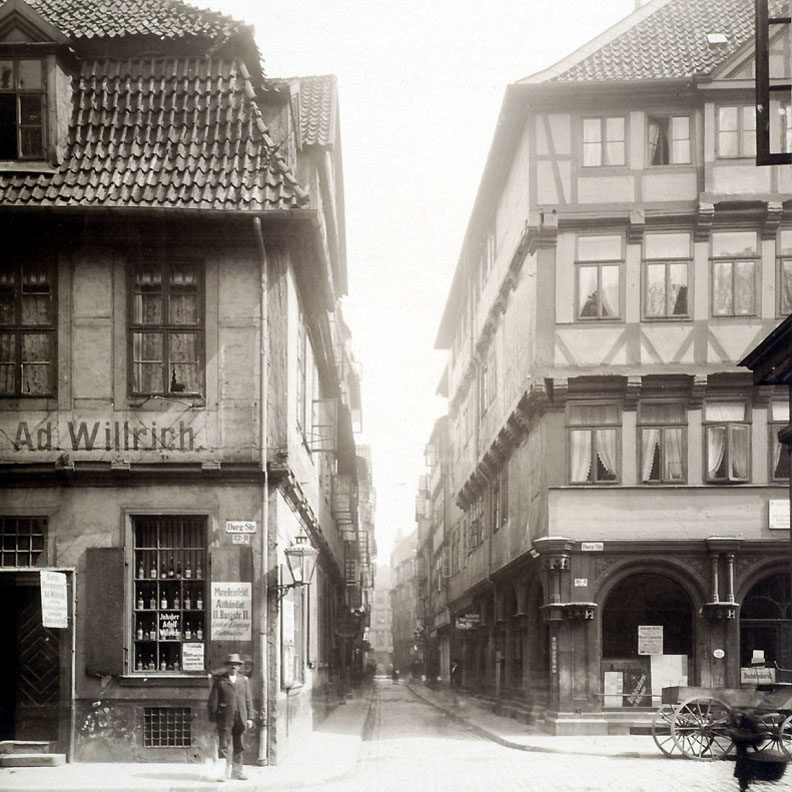
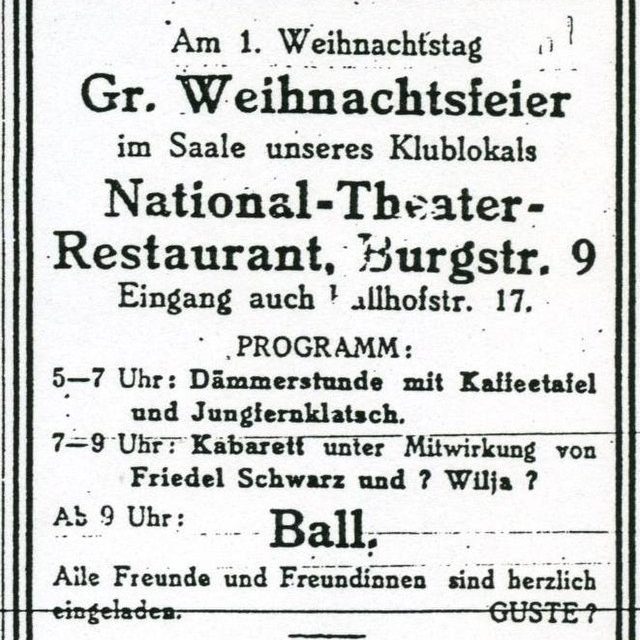
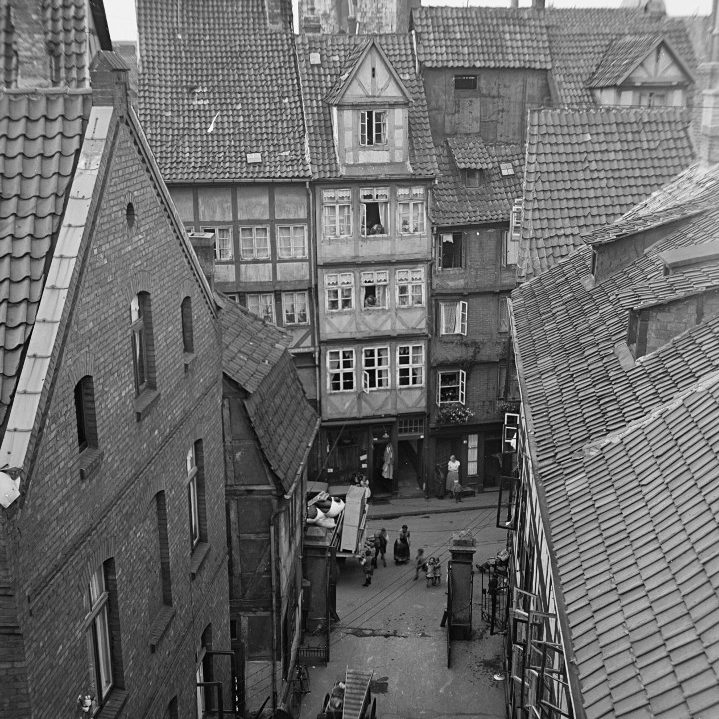
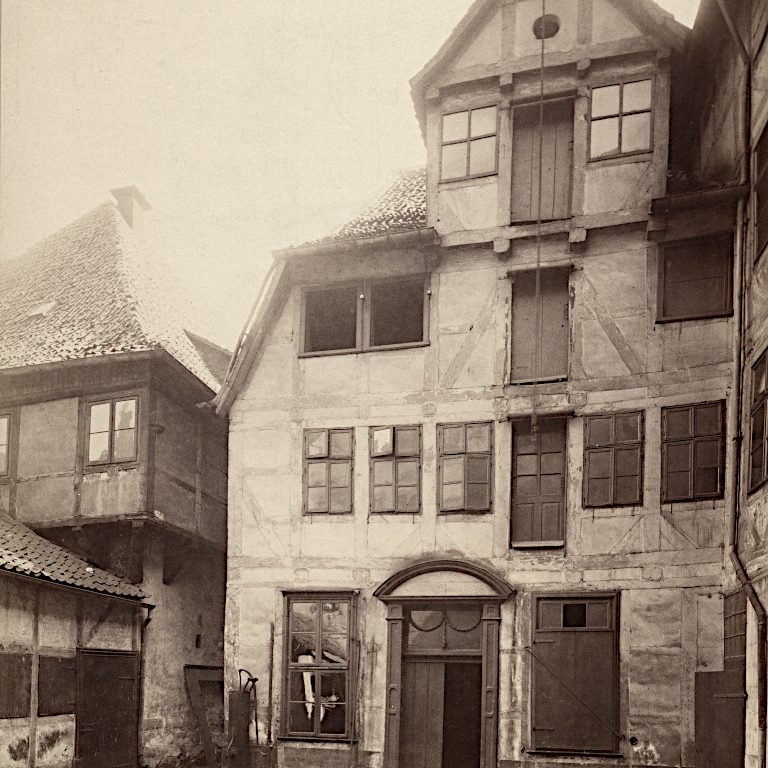
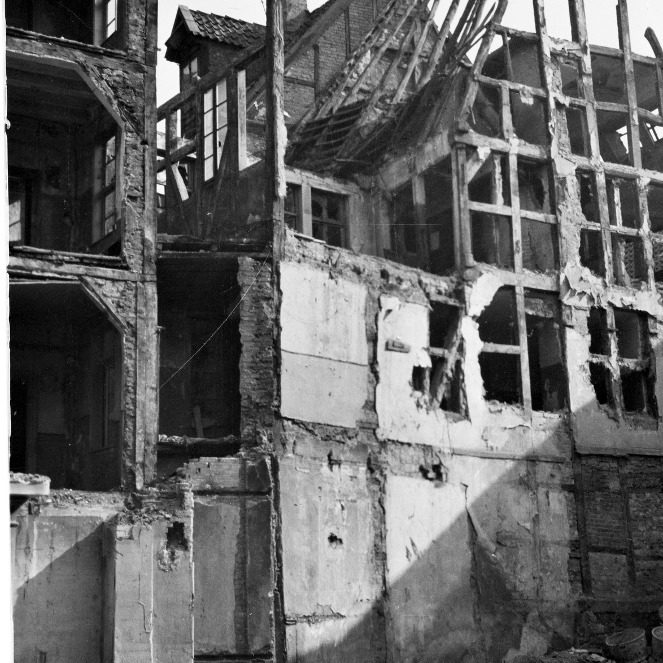
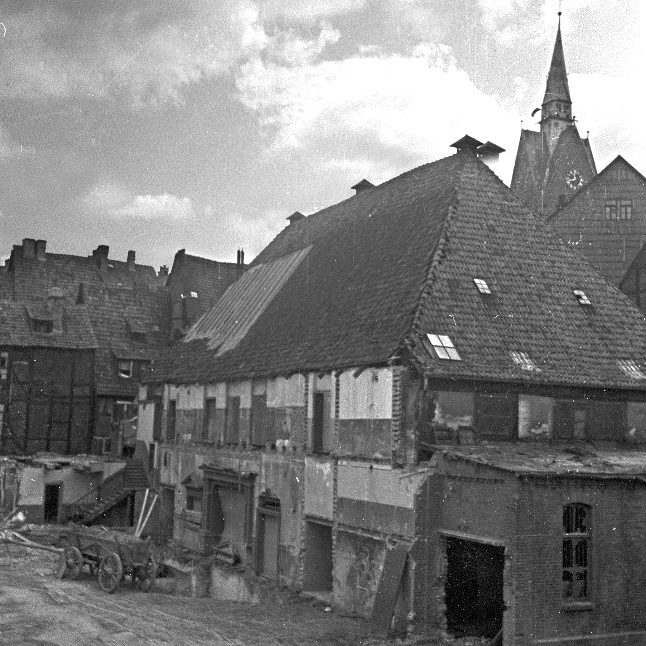
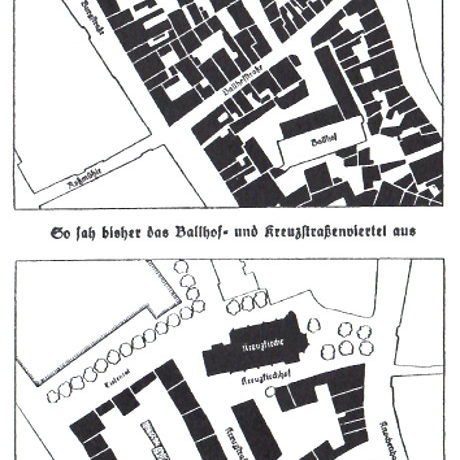
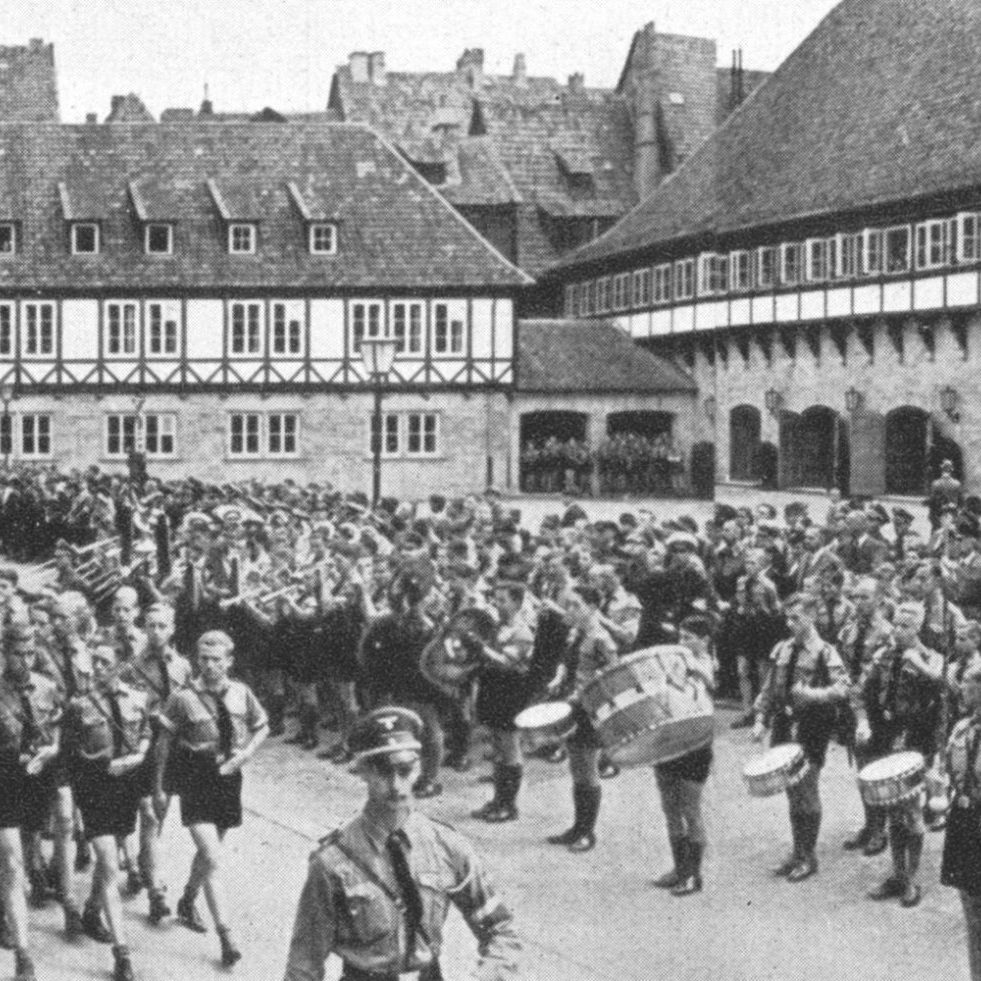
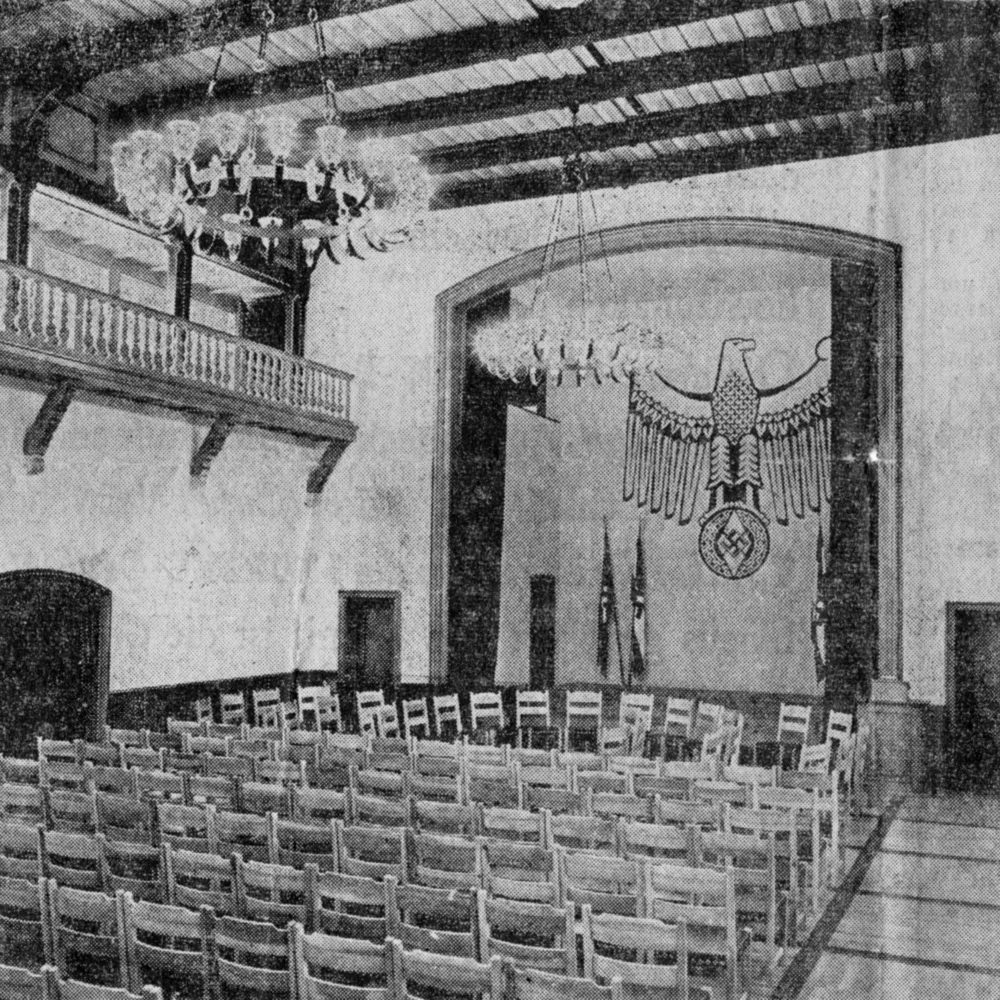
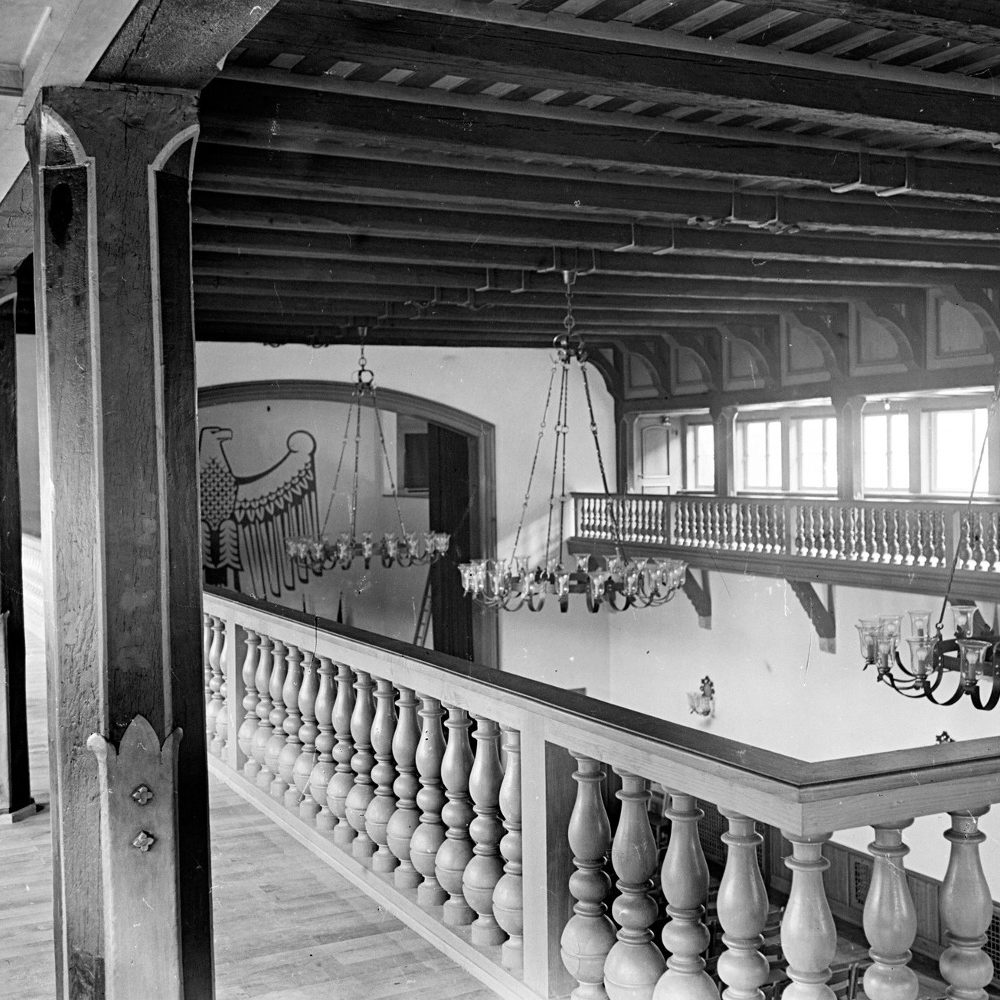
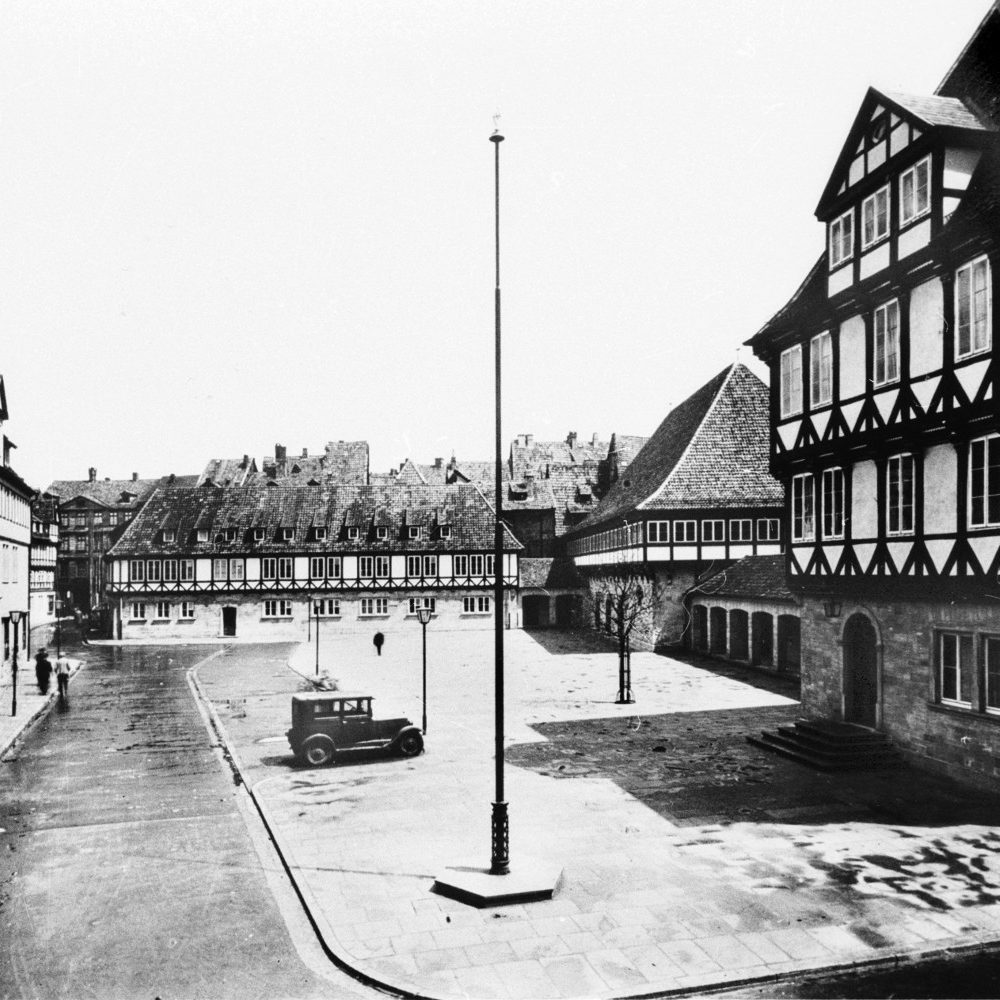
![Hanover: The victory rune [Sig-rune] and wolf's hook on the former League of German Maidens home, 2014. The wolf's hook was, among other things, the emblem of the SS Elite Division "Das Reich", the single victory rune the emblem of the German Youngsters in the Hitler Youth, and the double victory rune the emblem of the SS [the Schutzstaffel]. Photo by Michael Pechel](https://zukunft-heisst-erinnern.de/wp-content/uploads/2020/02/ballhof_11-1000x1000.jpg)
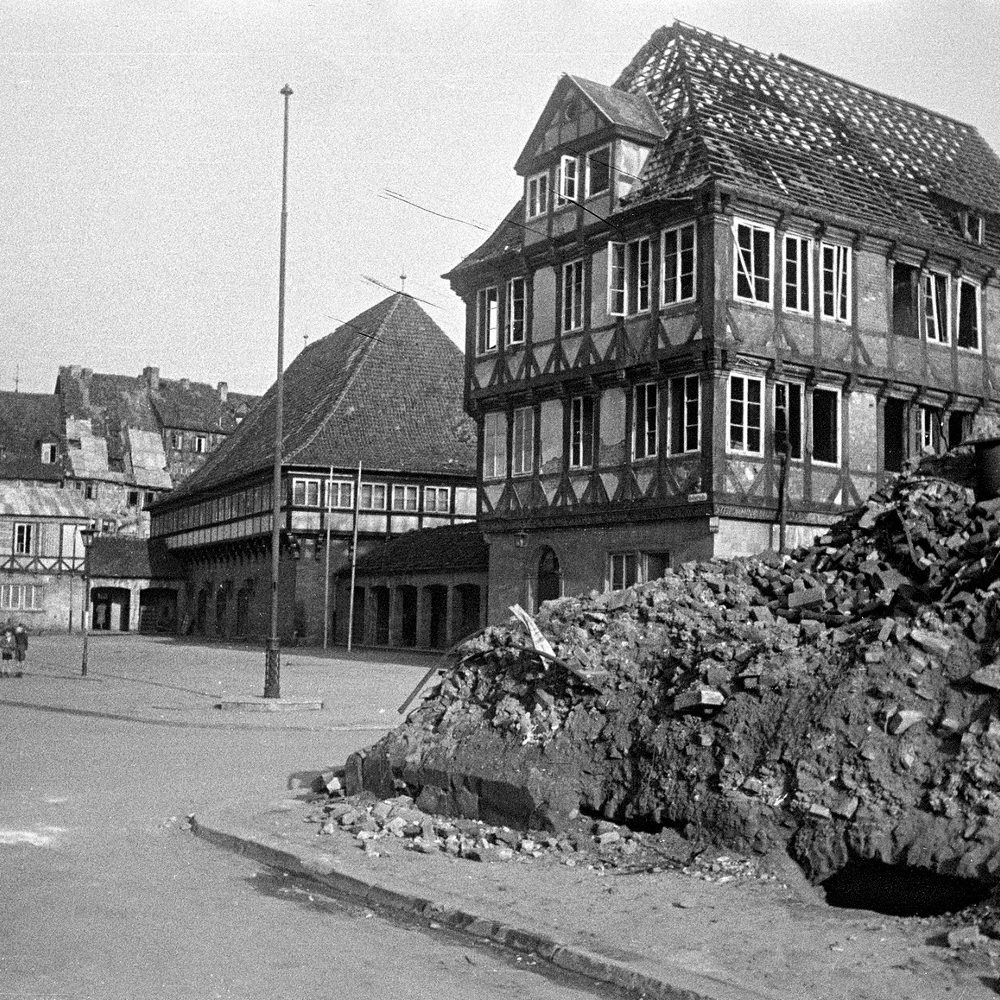
![Inscription on the commemorative plaque: On 1 July 1890, the "Verband der Fabrikarbeiter Deutschlands" [Factory Workers' Union of Germany] was founded as a trade union for unskilled workers in the Ballhof in Hanover. After the National Socialists had crushed the "Factory Workers' Union of Germany" on 2 May 1933, the Chemical, Paper and Ceramics Industrial Union was founded in Hamburg-Harburg on 17 December 1946. The headquarters of this union has been in Hanover since 1890.](https://zukunft-heisst-erinnern.de/wp-content/uploads/2020/02/ballhof_13-1000x1000.jpg)
